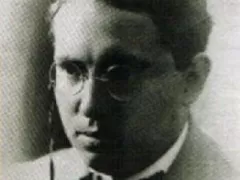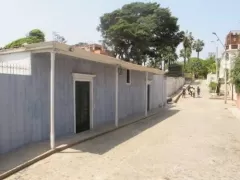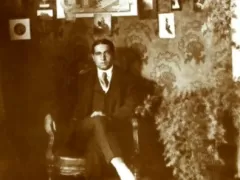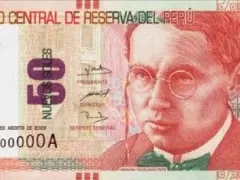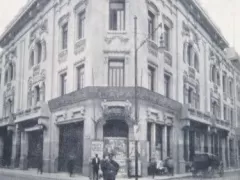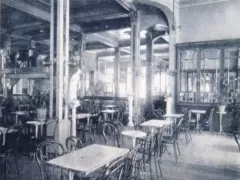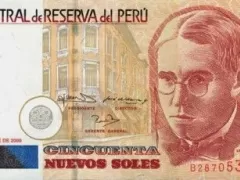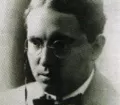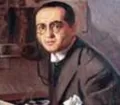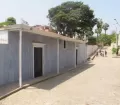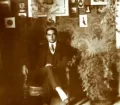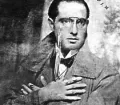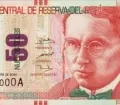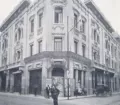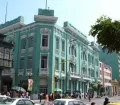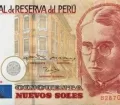Pedro Abraham Valdelomar Pinto was a famous Peruvian writer leaving us some of the most beautiful Peruvian narrations, short stories, plays for theaters, essays and chronicles; and for his time even some quite daring writings. He was a regular at the famous Palais Concert, a café and the center for regular meetings of Lima's intellectual scene; and here he made the well-known statement: "Perú is Lima, Lima is the Jirón de la Unión, the Jirón de la Unión is the Palais Concert and the Palais Concert... that's me!"
Valdelomar was born in April 1888 (most probably either on the 16th or 27th) in Ica as the son of Anfilóquio Valdelomar and Carolina Pinto. He spent his early childhood in Pisco which is said to have influenced his stories and poems. At the age of 5, he came to Lima, where he visited the National College 'Nuestra Señora de Guadelupe'.
Together with his school friend Manuel Bedoya, Valdelomar, while still being at school, published his first magazine called 'La Idea Guadalupana'(The Idea of Guadalupe). He left school in 1911 and joined a college for engineers. Later Valdelomar enrolled at the literature faculty of the 'University Mayor of San Marcos'. To promote the candidature of Guillermo Billinghurst as president of the Peruvian Republic, Abraham Valdelomar founded the 'Billinghurst University Club'.
His career as a respected writer and caricaturist started with a caricature published on the 1st of September 1906 in the magazine 'Aplausos y Silbidos' (Applauses and Whistles). He was soon also well-known for his illustrations in the magazines 'Monos y Monadas' and 'Gil Blas'. His first poem 'Ha vivido mi Alma' (My Soul has lived) was published on the July 15, 1909 in the magazine 'Contemporáneos'. During his time in the Army, he wrote chronicles about the conflict between Peru and Ecuador that were published in the journal 'El Diario' under the title 'Con la Argelina al Viento'. With his novels 'La Ciudad Muerta' (The Dead City) and 'La Ciudad de los Tísicos' (The City of Lunger), both published 1911 in the 'Ilustración Peruana', Valedelomar could enhance his success. In 1912 he ran for the presidency of the Academic Center of the 'University of San Marcos', but lost the elections to Alberto Ulloa Sotomayor. However, Guillermo Billinghurst, newly elected President of Peru, showed his gratitude for Valdelomars support by appointing him as the director of the journal 'El Peruano'.
In 1913, he sent him to Rome as a member of the Peruvian Embassy. Arriving in Rome, Valdelomar wrote his 'Crónicas de Roma' (Chronicles of Rome) and mailed them back to Lima. In the same year, the novel 'El caballero Carmelo' (the Cavalier Carmelo) was published, for which Valdelomar received the Nation Prize. On the 4th of February 1914 Guillermo Billingshurst was brought down with a coup by Coronel Oscar R. Benavides and Abraham Valdelomar therefore preferred to resign from his diplomatic assignment in Rome. Back in Lima the journal 'La Prensa' offered him a job as an editor and until 1918 he ran his own column called 'Palabras' ('Talks' or better 'Gossips'), signing his publications normally with the alias 'Conde de Lemos' (Earl of Lemos).
In cooperation with José Carlos Mariátegui Valdelomar wrote the biography of Doña Francisca Zubiaga Bernales de Gamarra 'La Mariscala' (the Female Marshal) in 1914, which later was put on stage. He authored 'Cuentos Chinos' (Chinese Fairy Tales), 'Cuentos Yanquis' and other stories; all released under the title 'Los Hijos del Sol' (Sons of the Sun). In 1916 he founded and managed the magazine 'Colónida' where Valdelomar published his stories next to articles of the intellectual Peruvian writers. In 1917 he was awarded with the competition prize of the 'Circle of Journalists' for his essay 'La Psicología del Gallinazo' (The Psychology of the Vulture).
Developing political ambitions, Valdelomar visited the Peruvian countryside and gave conferences in cities like Arequipa, Puno, Cuzco and Moquegua. In his home town Ica he was welcomed enthusiastically. On the 24th of September 1919, Abraham Valdelomar was elected as representative of Ica before the 'Regional Congress of the Peruvian Center' in Ayacucho. Due to a tragic accident, he died on the 3rd of November 1919, at the age of only 33 years. In a laudation to the great writer and caricaturist, the Peruvian author Julio Ramón Ribeyro wrote:
If not because of this accident, physiognomy of our literature would have changed considerably. Valdelomar Pinto left us some of the most beautiful Peruvian narrations, immortal lines, for his time quite daring short stories, plays for theaters, essays and inimitable chronicles. With him an unfinished map of our spiritual space disappeared.
To honor this famous Peruvian writer, the image of Abraham Valdelomar Pinto can also be found on the Peruvian S/. 50 banknote.








